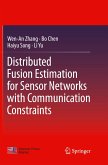Fundamentals of Stochastic Signals, Systems and Estimation Theory (third edition) explains the concepts underlying modeling and analysis of stochastic signals and linear stochastic systems. Two popular stochastic models: the polynomial (or transfer-function) model and the state-space model, are employed in schemes that lead to the successful estimation of unknown signal-/system-model parameters or states. The third edition is a substantially expanded treatment that benefits from new work performed in nonlinear robust estimation and features:
new chapters related to the use of nonlinear filtering as an alternative to extended and linearized Kalman filtering andnovel practical examples related to video-based object tracking and radar-based target tracking for following maneuvers.
Many examples are used to illustrate key concepts in an intuitive fashion and readers are shown how to write software implementations of estimators. Experiments and simulations are performed using MATLAB® to help readers to understand the main theoretical concepts.
The book will help professionals and students studying high-order dynamic systems with random inputs. It will be of use to readers working with or studying problems in wireless communications, networking, electronics, photonics, power systems, robotics and mechatronics.
new chapters related to the use of nonlinear filtering as an alternative to extended and linearized Kalman filtering andnovel practical examples related to video-based object tracking and radar-based target tracking for following maneuvers.
Many examples are used to illustrate key concepts in an intuitive fashion and readers are shown how to write software implementations of estimators. Experiments and simulations are performed using MATLAB® to help readers to understand the main theoretical concepts.
The book will help professionals and students studying high-order dynamic systems with random inputs. It will be of use to readers working with or studying problems in wireless communications, networking, electronics, photonics, power systems, robotics and mechatronics.








